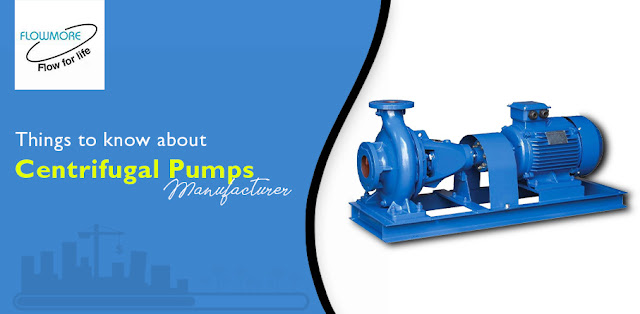One dynamic machine that may
transform mechanical energy into a more useful form without going through
positive displacement is the centrifugal pump. As the water passes
through the impeller, casing, and volute after leaving the pump's eye,
centrifugal force is used to transform the energy in the water into velocity.
This speed is subsequently transformed by the pump into pressure energy, also
referred to as head or elevation.
Modifying the impeller and/or the
rotational speed at which the pump is operated can alter the performance of a
particular pump design. Manufacturers frequently utilize "tombstone"
charts, to show the range of possible performances. Here is an illustration of
the range of rotating speeds, different impeller sizes, and types of pump
casings that a particular pump design may support, along with the matching head
pressure and capacity. All segment or tombstone top lines represent the real
pump curve, given the provided speed, impeller size, and casing design.
Where does the stability curve for the pump lie when it is operating?
Centrifugal pumps will reach their
best efficiency point, or BEP, at some point in their pump curves. The Centrifugal Pumps manufacturer
India has identified the pump's most efficient mode of
operation. In order to guarantee that the pump lasts as long as possible with
the least amount of maintenance, the manufacturer also recommends these values.
In an ideal world, you would select a pump by aligning the operating point with
the locations that provide the most efficiency. When everything is taken into
account, this could result in significant savings throughout the course of the
pump's life.
Making a decision from the numerous
Centrifugal Pumps can be difficult,
but someone has to do it in the end. Many elements need to be taken into
account, including the necessary flow, differential pressure, suction
conditions, and energy and capital expenses associated with the pumps in
question.
It is crucial to consider the
entire value of ownership, which includes the original investment, ongoing running
expenses, and maintenance expenses, when deciding on the precise pump. It is
useless to have an inexpensive pump that requires expensive maintenance and is
inefficient.
Although this book's selection
process focuses primarily on hydraulic design, mechanical design is also
discussed. Examining the essential hydraulic characteristics of a centrifugal
pump will help you speedy determine if it's far the proper desire for your
desires. If making a decision that a centrifugal pump is the pleasant
alternative on your application, you should be able to kind via the numerous
gives that pump manufacturers will offer you. Calculating the quotes is covered
in detail in an entire chapter so that you can accurately assess the offers
made by pump manufacturers and select the best deal overall.
Pump manufacturers have several options for displaying the performance curves of their pumps, including:
- Consistently shown performance using several head-quantity curves for a variety of impeller diameters.
- This capability might be demonstrated at different speeds using the same impeller diameter.
In any case, they will display the
power consumption, efficiency, and necessary suction lift—also referred to as
NPSH—for the pump's operating range. Plotting the required flow, total head,
and suction lift on the performance curves allows one to calculate the required
input power in kW and the required speed in rpm.
Conclusion
However, keep in mind that the
input power is usually provided by clear, cold water. As a result, the force
required to move the fluid will directly correlate with its density in relation
to water, changing the amount of power required to pump the fluid.

Comments
Post a Comment